It’s life. You live it – or at least you try – and when faced with circumstances which appear to go beyond what most others have to deal with, you take what is in your control and give it everything you’ve got. It’s all you can do and live with the knowledge that you tried your best, so win or lose, it is a life for which you can be proud.
Everyone has a story and this is The Sunday Series.
The Sunday Series (76): Borrowed Life
“Hi I’m Mia. I,m 45 years old and currently living in Maryland. I have a beautiful daughter (Alhea) and am loving every second of my life. Everyday is beautiful to me.” Those are the first few sentences of Mia McDonald’s website. Life is beautiful, because Mia lives it in gratitude, awareness and appreciation that each of us, as she believes, is on borrowed time.
Mia was looking, as she says in her own words, “extra pretty” on the morning of February 7th, 2007. She was wearing a brand new sweater she had just purchased, and a new heavy coat. A native of the Philippines, Mia had come to America just a few years earlier and only six months ago she had earned the right to drive, having obtained her license from the MVA in Maryland. But Mia was still restricted from driving downtown to work at her job at TransAmerica, so she drove instead to a light rail stop at BWI airport near her home and caught the train into Baltimore.
Mia says the light rail stop was rarely crowded and on this day there might have been only one or two people waiting for the train. She got out of her car with her coffee and her pocketbook and was talking to her sister on the phone. Mia’s sister called her every morning to make sure Mia made it to the train stop safely, just checking in as any loving sibling might do. The train arrived around 7am each work day, and on this day Mia could see the train in the distance so she told her sister she had to end the call and get to the other side of the tracks so she could hop on the light rail.
Usually Mia did hop, right over the tracks, ignoring the pedestrian walkway to get to the side where the riders stood to wait for the light rail train to arrive. But on this cold February morning, following a snowfall the previous night, Mia decided to do it right and take the approved “safe” path to cross the tracks. Carrying her coffee and her bag Mia made her way to the walkway. She could still see the train far approaching, but it was still far enough away in the distance for her to cross the tracks – it’s the last thing Mia remembers before waking up in the ambulance.
“When I woke up I thought I was just taking a nap on the train, but why was it not stopping? I looked up and realized someone was cutting off my new clothes. I asked the woman sitting next to me why and she told me, ‘you got hit by the light rail train’. That’s all she said. Then I passed out again.”
Lucky for Mia the train was slowing down and approaching the station when it hit her. Although for Mia the details are still sketchy she knows she was dragged by the train a short distance, her right foot caught underneath. For five days the doctors at University of Maryland Shock Trauma did the best they could to save the toes on that foot, doing multiple surgeries and skin graphs. But in the end even the doctors had to admit there would be no way to save them all. They told Mia two or three of her toes were so badly damaged there was only a 50/50 chance the others could survive without the risk of severe infection.
The decision was made to amputate half of Mia’s right foot. Her broken pelvis, fractured ribs and the rest of her bruised and battered body would have to heal on its own.
A few weeks at Shock Trauma, a week in intensive rehab and then home for more than a month of in-home rehabilitation, it would be up to Mia to accept her new fate and to walk again.
“I never realized it would be so difficult to walk without my toes”, says Mia. All my weight depended on my left foot, my right foot was almost useless, I couldn’t do anything without my left foot. It was really hard to accept at the time. I can’t believe I lost my toes, and realize my whole life was affected. When I started trying to walk I had so much trouble, leaning on the wall, not wanting to try. The nurse came to help me in my home and at first I was scared of her because she was tough, but it turns out in a good way. She said to me, ‘If you don’t want to walk you will be classified as disabled, but you are NOT disabled.’ She encouraged me to walk, pushed me to do it, she was excellent.”
Mia needed the encouragement. She still had an 11-year-old daughter to help raise. Mia had moved in with her sister, not far from her home. Her daughter Alhea was still living back at the house with her father, so she could stay in school while her mom went through rehab. Mia says when Alhea came to visit she hid her emotions from her, wanting her daughter to be OK. “I didn’t show her how I felt most of the time”, Mia said. “So if I cried I cried in the bathroom, making sure Alhea couldn’t see.”
Mia was given eight months of partial disability time (and checks) from her job at TransAmerica and knowing she had a deadline to get back to work she worked hard on her comeback. After a few months in a wheelchair, she learned to walk again with a special boot and she took a course to learn to drive with her left foot, passing a special test which qualified her as a partially disabled driver. She wanted to make sure she retained her freedom and NOT rely on others to transport her around.
During this time Mia also realized she needed to give back. She applied and was accepted to serve as a volunteer for Habitat for Humanity, to help rebuild, or build homes for the less fortunate. Mia also did some work with her mother who served as a caregiver for Sunrise Assisted Living. Mia realized from her own experience how important it is to have someone to help you when you are in need – and loved caring for others – especially the seniors trying to make their way through the late stages of life.
Mia applied to open her own home care business but was eventually turned down, not having the resources to make it happen. But her spirit and her desire to do more than simply live out life without making a difference was not to be deterred. She was upset with her setback to open the home care business but still felt like she could “make something happen.”
Then something did. Sometimes it’s the simplest thing, an awareness of what is around you, the desire in your heart, the quest and thirst to become more which makes you take notice of something which has been there all along. For Mia it was the article on her wall at work. Mia says: “I came to work (at Transamerica) that day with my boot on and that morning I was really tired after I delivered the mail all over the building. My leg is hurting so bad. I sat down and looked up at the article on the wall that said life is borrowed. I was feeling sorry for myself. I wish my toes had not been cut off, I wish I was not working this type of job and going through all of this and when I read that title again that life is borrowed it touched my heart and my head – why am I complaining? I am still alive!”
I took the phrase and I simply reversed it to Borrowed Life. I had some shirts embroidered with that phrase and people started taking notice and asking where they could get one. I enrolled in a course for women entrepreneurs in Baltimore and after three months of extensive training I graduated with a business entity: Borrowed Life.
The phrase has meaning to Mia of course, but she tells a story which validates its deep meaning to others as well.
On the last day of her class each student was required to give a presentation about their business with a trio of visitors in attendance. On this day it was the Vice-President of Sun Trust Bank (where Mia has her car loan), a higher-up at State Farm Insurance (where Mia has her car and home insurance) and one of the directors of the Maryland Transportation Authority (the same state organization that oversees operation of the light rail trains, it was one of those trains which changed Mia’s life!). For Mia the coincidence was almost surreal. She says despite her challenge with the English language to explain her story and her business idea, she could tell each person was interested, except for the VP of Sun Trust Bank who paid little attention.
After the final day of class Mia reached out to all three individuals by e-mail to thank them for coming. All replied back to her, except for the VP from Sun Trust Bank. But after a few months Mia got an e-mail from the gentleman. The reason he had not responded – he had been rushed to the hospital where doctors found a blood clot in is brain, they had to open him up and remove it. Suddenly the same person who had ignored Mia’s Borrowed Life business thought it was a great idea, he said he could relate to it and offered her the opportunity for funding.
Another borrowed life coming full circle.
While Mia continues to work her job at a pharmaceutical company and continues her volunteer work at Habitat for Humanity she is actively pushing to get Borrowed Life, her mission and her message out to the masses. There is apparel and accessories which can be purchased starting this October at (http://www.borrowedlife.org/) and Mia hopes this could become a worldwide business. But whatever the outcome the lesson learned is clear.

“I learned we don’t have any protection in life”, says Mia. “Anything you can see, or touch, or feel, even our own lives are not ours – it is crystal clear that anything can be taken from you in a second. My hope for the business is that this phrase really gets people to pay attention to learn and realize what are the most important things in their lives. Look in the mirror and you can sense it. Life is not perfect, we all have obstacles and challenges, but everything is temporary.”
So take Mia’s advice, borrow the best you can from your own life and then go out and make a difference.
Until next time, thanks for taking the time
Mark
Mark Brodinsky, Author, Blogger, Speaker, Emmy Award Winner, Field Sales Leader for USHEALTH Advisors
(http://www.prweb.com/releases/markbrodinsky/072015/prweb12862708.htm)
Author: The #1 Amazon Best-Seller: It Takes 2. Surviving Breast Cancer: A Spouse’s Story
(http://www.spouses-story.com/)
Spread the message: please share this link: https://markbrodinsky.com/
Feedback on The Sunday Series is welcome and encouraged. You can leave a comment on the blog, reach out on social media (see the Contact Page at the top of this blog), or email: markbrodinsky@gmail.com
For more than 75 other stories of courage, hope and inspiration simply search the words Sunday Series on this blog.
And Join the Tribe! Enter your name and e-mail address on this blog and get posts from It’s Just About…Life & The Sunday Series delivered to your inbox. It’s free and spam-free too!




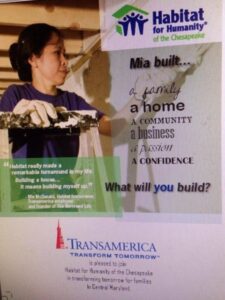
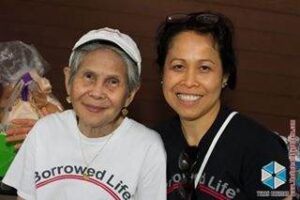
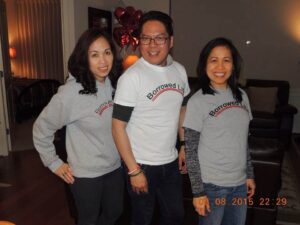
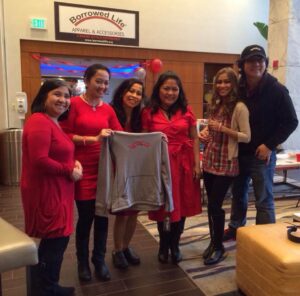
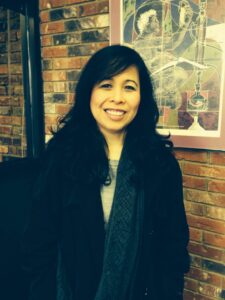
[…] August 2, 2015 By markbrodinsky Leave a Comment […]